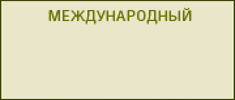List articles
|
Commodity market analysis that includes the competitive environment analysis made during a certain period of time is not an end in itself. It is supposed that some administrative or economic decisions are to be made in the end. The decisions should be made either to maintain the market situation or to change the competitive market environment. It means the commodity market analysis should be made at different time intervals twice. Firstly, it should be made when an adminis¬trative decision is made and, secondly, at the moment when the planned outcome is about to be reached. The analyst should have an easy-to-use tool for processing the data to keep him from double work.
Automated commodity market analysis system (ACMAS) was created by one of the article authors. At the moment when it was invented it was seen as an application needed to manage the sales and production data generated by different entities (legal entities and individuals) that produced different goods on different territories. Therefore the system can be of interest for the analysts and the marketing people.
Continue...
|
|
|
Despite the fact that the policies are implemented in different ways, the fiscal and competitive ma¬ket-related policies have a common goal of ensuring the market economy mechanisms' efficiency and improving the climate for doing business and making investments. Today the interdependency and the mutual influence between the fiscal and market competition-related policies are growing bigger in the field of legislation. The reason for the growth is the fact that certain processes are going on in the economy and the correlation is being sought with the development trends that exist in the foreign legislative systems.
According to the author, the competitive market-related policies and the fiscal policies should be elaborated by the Federal Antimonopoly Service in cooperation with the Federal Tax Service. The work should be coordinated by the RF Government. These two executive bodies should act within the framework of their terms of reference and should foster favorable environment needed to develop bona fide competition where the tax law is used as a control instrument and not as a basis for taking punitive measures.
Continue...
|
|
|
The Russian banking business today is highly concentrated. 100 largest banks have 83.5 % of total assets. The high asset concentration in the banking business is nothing new for the international practitioners. The 5 largest Swedish banks hold 90 % of the assets; the same asset indicator is 87 % in Canada; 80 to 85 % in the Netherlands, Switzerland, and Belgium; 66 % in the Czech Republic; 55 % in Spain; 51 % in Hungary; 48 °% in Poland and 42 °% in India.
Does the capital concentration bring about the increase of the banking system competitiveness level? What influence does the concentration exert upon the real sector of the economy? The answers to the questions are hard to find.
Continue...
|
|
|
Insurance today is the most important factor contributing to the constant economy renovation, economic stability and social security. Being institutional investors, the insurance companies raise sufficient funds and make long-term investments that contribute to the economic development. Insurance companies are becoming increasingly important for the Russian economy. It becomes clear that the companies' operational efficiency is not just in the interests of the insurance agents; its increase will contribute to the welfare of all citizens. The insurance agents have to work in an environment which is full of various competitors. The article is about the insurance market competi¬tion analysis trends.
Continue...
|
|
|
As it is known, Russia lacked many prerequisites in the early 90-s needed to ensure that the competitive market mechanisms would contribute to the efficient economy formation. Different market instruments use is a characteristic of the developed economies. It is natural that the tools' efficiency is fairly restricted if they are used in the economies where the transition period is not over.
Nevertheless, Russia created its competitive market regulations during a relatively short period of time; many market development instruments and mechanisms have been used; the business community uses the terms competition and competitiveness widely; we can see some business success stories.
However, we can see that there are no prerequisites yet that could become the basis for the Rus¬sian economy competitiveness as the deep economic crises of the past hamper the competitive environment development.
Continue...
|
|
|
The global economy and the national economies exert some influence upon one another, and the influence is increasing. International migration of financial, commercial, current, innovation-based, and intellectual capitals makes the national and world market competition fiercer and changes the market organization.
The national economies become more intertwined, and the modern core capital extended reproduction opportunities depend on this interdependency. The globalization and the competition itself influence the developed and underdeveloped economies' development but the patterns of influence are different for the two economy types. The issues connected with the globalization con¬sequences and the permanent economic entities' wishes to be independent are still unresolved. The Russian economy keeps increasing the volumes of the exported equipment needed for the key core capital reproduction sectors. As a result, it is becoming increasingly dependent on the competitors' behavior. The prospects related to the innovations introduction are vague.
Continue...
|



